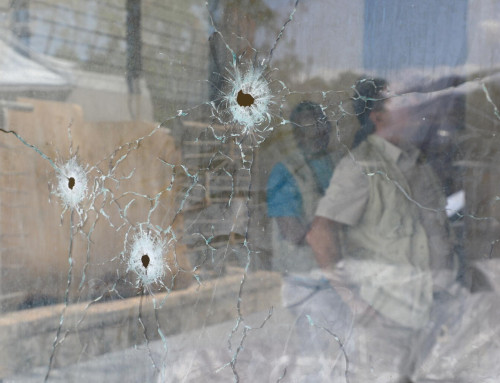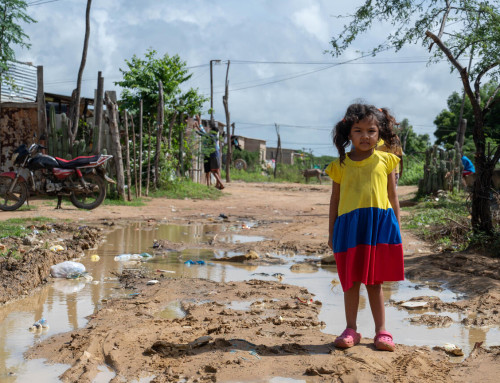Statement by Ms. Virginia Gamba Special Representative of the Secretary-General for Children and Armed Conflict to the 46th Session of the Human Rights Council
Please check against delivery
Madam President,
Excellencies,
Dear colleagues,
Ladies and gentlemen,
It is an honour to address the Human Rights Council as we commemorate the 25th anniversary of the creation of the children and armed conflict mandate by the General Assembly. Two thousand and twenty has been a challenging year and, it is important to take stock of the challenges we have faced, but also of the progress we have made.
The number of grave violations against children remained unacceptably high while respect for international humanitarian law, international human rights law and children’s rights continued to erode. Of great concern has been the increase in cases of abduction of children. This violation, together with sexual violence including rape and attacks on schools and hospitals are the violations where an increase rather than a decrease vis-à-vis the previous year has been noted while numbers regarding the denial of humanitarian access remained high. The detention of children for their actual or alleged association with parties to conflict including those designated as terrorist by the United Nations, remained a disturbing reality.
Most of these violations happened against the backdrop of the COVID-19 pandemic. Restrictive measures to contain the Covid-19 pandemic often had an adverse effect on children and had an impact on the ability of the United Nations to carry out vital work to end and prevent grave violations against them, including by reducing opportunities for engagement with parties to conflict and delaying interviews with victims. Planned training and sensitization sessions, workshops as well as field visits, had to be postponed or cancelled. Travel restrictions and mitigation strategies also affected humanitarian access and exacerbated pre-existing operational challenges. Nevertheless, both my office and the country task forces on monitoring and reporting have continued to monitor and report, adapting existing resources to the needs at hand.
Madam President,
Despite persisting and emerging challenges, important progress to end and prevent grave violations was achieved last year, including in the area of transitional justice.
Parties to the Revitalized Peace Agreement in South Sudan, for example, signed a Comprehensive Action Plan covering all six grave violations; and in Myanmar, the first action plan with an armed group was signed to end and prevent the recruitment and use of children in armed conflict. In the Central African Republic, the President promulgated the Child Protection Code that criminalizes, inter alia, the recruitment and use of children, sexual violence, attacks against schools and hospitals, and the denial of humanitarian access, and considers children associated with armed forces and groups as victims. In Mali, the national monitoring committee in charge of the implementation of the Safe Schools Declaration adopted its action plan and identified priority activities addressing, inter alia, the military use of schools during conflict.
Further, it is important to recall that inclusive, age-appropriate and gender-sensitive processes of transitional justice and peacebuilding are essential parts of reintegrating conflict-affected boys and girls and key to breaking cycles of violence. In this regard, some progress during 2020 was obtained in Colombia and Mali through the inclusion of children in transitional justice processes.
Madam President,
Protecting children used and abused by, for and in armed conflict and preventing child rights violations implies maintaining a strong monitoring and reporting mechanism, while increasing our engagement with parties to conflict and securing the necessary resources for child protection capacities on the ground.
Firstly, to support monitoring efforts by field colleagues, my Office is currently developing a report on the regional workshops with the country task forces on monitoring and reporting held in four regions of the world. We are further developing technical guidance notes on the abduction of children and on the denial of humanitarian assistance for children. We are also working on three analytical papers: one on the impact of COVID-19 on monitoring and reporting grave violations and on the engagement with parties to conflict; one on the gender dimension of grave violations against children; and one on the impact of grave violations on livelihoods and on the achievement of the Sustainable Development Goals. Furthermore, the Secretary-General requested me to produce a study which will result in a publication to mark the 25th anniversary of the CAAC mandate. The study will focus on the evolution of the mandate throughout the years, including the determination of parameters for effective monitoring and best practices for the engagement with parties to conflict to end and prevent violations.
Secondly, the architecture to monitor, report, engage and advocate for ending and preventing violations is only as strong as the financial and human resources available for its functioning. Well trained, specialized and dedicated child protection advisers in United Nations peace operations and special political missions, as well as in the country offices of UNICEF and other relevant partners such as UNHCR and in the offices of United Nations resident coordinators in situations of armed conflict, are central to ensuring that the children and armed conflict mandate is effective
Madam President,
In 2020, I also continued raising awareness and strengthening partnerships. The campaign Act to Protect children affected by conflict is central to efforts to shine a light on the continued suffering of conflict affected children – and on our joint responsibility to better protect them. To this end, working with Member States, civil society, regional and sub-regional organizations, UN partners and academia, was and remains a cornerstone of my work.
Further, I closely cooperated last year with the Human Rights Council and its mechanisms, including through the contribution of my Office to the universal periodic reviews of Lebanon, Myanmar, and Somalia. I exchanged information and identified common areas of concern with the commissioners of the Independent International Commission of Inquiry on the Syrian Arab Republic; with the Head of the Independent Investigative Mechanism for Myanmar; and with the Special Rapporteur on the sale and sexual exploitation of children, amongst others. Another example of our collaborative approach and partnership building is the CAAC-UNICEF partnership in the Global Coalition for the Reintegration of Child Soldiers. Here, we published three expert papers and we are now planning the second phase of research that will illuminate best practices to achieve effective reintegration in a manner that considers each child as unique and that can be sustainable in the long term.
Madam President,
To conclude, let me remind all of us that if we want to build strong and resilient societies and break cycles of violence we must invest in children’s rights and put their protection front and centre in all our actions. Let us do that.
Thank you.






